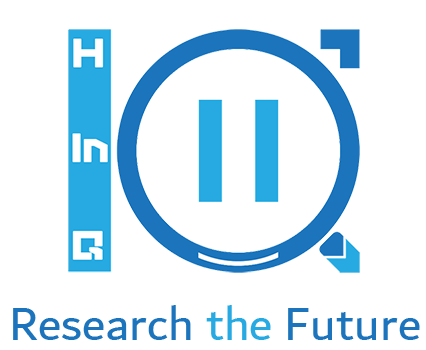Introduction – Beyond the Click: Why Marketing Needs a Heart
Marketing has long been measured by numbers click-through rates, conversion funnels, return on ad spend. These metrics tell us what happened, but not why it happened. They capture behavior, but not the emotion that drives it. In a digital world overflowing with dashboards and data points, something vital is missing: the human heartbeat.
Consumers are not just logical decision-makers. They are emotional beings navigating choices shaped by subconscious triggers, personal experiences, and fleeting moods. Traditional metrics offer only a surface-level view of this complex reality. That’s where emotional analytics comes in.
This emerging field uses advanced technologies to analyze facial expressions, voice inflections, text sentiment, and biometric feedback. The goal is not just to track reactions, but to understand them at scale, in real time, and with increasing precision.
As attention spans shorten and customer expectations rise, marketers need more than numbers. They need meaning. Emotional analytics offers a way to decode how people truly feel about brands, products, and content and to use that insight to create more resonant, effective campaigns.
What follows is an exploration of why emotional analytics is not just a tool but a strategic evolution in the future of marketing.
The Metric Trap: Why KPIs Are Only Telling Half the Story
For years, marketers have lived by key performance indicators. Metrics like open rates, bounce rates, and cost per acquisition have become the go-to tools for evaluating success. They are easy to track, simple to compare, and offer a sense of control. But there is a growing realization that these numbers only scratch the surface of what truly influences consumer behavior.
While KPIs can show what users did, they rarely reveal why they did it. A high click-through rate might suggest interest, but it says nothing about the emotional state that triggered the action. A conversion does not tell you whether a customer felt confident, curious, or pressured. This missing context limits the effectiveness of even the most data-rich strategies.
As the market grows more competitive and audiences more fragmented, the pressure to understand emotional drivers is intensifying. Marketers who rely solely on traditional analytics risk optimizing for mechanics rather than meaning. They may increase impressions while missing opportunities to build real connection and trust.
It is no longer enough to measure engagement. Today, success depends on decoding emotion because emotion, not action alone, is what builds loyalty and drives long-term value.
What’s in a Feeling? The Science Behind Emotional Analytics
Emotional analytics is more than a buzzword. It represents a growing field of science and technology designed to measure how people feel in response to content, brands, and experiences. This is achieved not through guesses or surveys, but through data captured directly from faces, voices, language, and physiological signals.
Using artificial intelligence and machine learning, emotional analytics platforms process visual, vocal, and written cues to detect emotional states like joy, frustration, confusion, or excitement. Facial recognition software can track micro-expressions in real time. Voice analysis can detect stress or enthusiasm based on tone and pitch. Natural language processing interprets sentiment from social media posts, chat interactions, and customer reviews.
Some systems go even further by using biometric inputs such as heart rate, eye movement, and skin conductivity to map how emotions change throughout a user experience. The result is a multi-layered emotional profile that gives marketers a much deeper understanding of audience response.
This shift turns emotions into measurable, actionable data. It bridges the gap between what people say and what they actually feel offering insights that traditional analytics tools could never reveal.
Feel First, Buy Later: Why Emotions Outsell Logic Every Time
Marketers have long known that emotional appeal works, but science now confirms just how powerful it really is. Studies in neuroscience and behavioral psychology consistently show that people rely on feelings more than logic when making purchasing decisions. Rational arguments support a decision, but emotions often trigger it.
Brain scans reveal that emotional responses occur milliseconds before the brain engages in rational thought. Whether it is joy, fear, trust, or nostalgia, these feelings influence perception, recall, and ultimately action. A well-timed emotional connection can increase brand affinity, boost conversion rates, and even justify premium pricing.
This is why successful campaigns are rarely built on facts alone. They are built on stories, visuals, sounds, and experiences that tap into a customer’s deeper motivations. Emotional resonance creates memory. And memory, more than information, drives long-term preference and loyalty.
Marketers who ignore emotional triggers are at a disadvantage. They may optimize for clicks without understanding what compels someone to act in the first place. As emotional analytics makes these hidden motivators more visible, the ability to market with emotional intelligence is becoming not just a creative asset, but a measurable business advantage.
Data With Soul: How Smart Brands Are Using Emotional Insight to Win
Forward-thinking brands are already turning emotional analytics into a competitive advantage. By measuring how customers feel in real time, they are gaining deeper insights into what drives engagement, satisfaction, and loyalty and they are using that knowledge to fine-tune their strategies across channels.
In advertising, emotional data helps companies test how audiences respond to different versions of a campaign. Instead of guessing which ad will perform best, marketers can see which version evokes the strongest emotional response and make decisions based on that evidence. This leads to more impactful storytelling and better return on investment.
Customer experience teams are also benefiting. Brands are using emotional tracking in call centers, live chats, and user feedback loops to identify when frustration builds or satisfaction peaks. These insights help teams intervene more effectively, optimize scripts, and improve overall service quality.
Even product development is evolving. Companies are using emotional signals to assess how people feel about prototypes, packaging, or digital interfaces before launch. The result is more intuitive design and stronger alignment with consumer expectations.
In a landscape crowded with data, emotional insight gives marketers the context they need to connect more authentically and act more intelligently.
The New Competitive Edge: Emotional Intelligence in the Age of AI
As artificial intelligence becomes embedded in every aspect of marketing, emotional intelligence is emerging as a powerful differentiator. Data alone is no longer enough. What sets successful brands apart is their ability to combine technological precision with a deep understanding of human emotion.
Emotional analytics plays a key role in this shift. By turning feelings into structured insights, it allows brands to predict customer behavior more accurately, tailor messages more effectively, and build stronger, more meaningful relationships. In an environment where consumers expect relevance and personalization, emotional context is what elevates a message from noise to resonance.
The integration of emotion-aware systems into marketing platforms is accelerating. From chatbots that detect frustration to content tools that adjust tone based on sentiment, the technology is evolving rapidly. But the real transformation lies in strategy. Emotional analytics is not just a tool for improving performance it is a lens for rethinking how brands communicate, serve, and innovate.
The future of marketing will not be defined solely by automation or scale. It will be defined by empathy, authenticity, and the ability to connect at a human level. Emotional intelligence, powered by data, is not just the next step. It is the new standard.
Ressources:
- Harvard Business Review: The New Science of Customer Emotions
- Forrester on Emotion in CX
- IBM on Emotional AI
- Emotion AI Market Growth & IBM Watson NLP Insights
- https://h-in-q.com/analytics/



